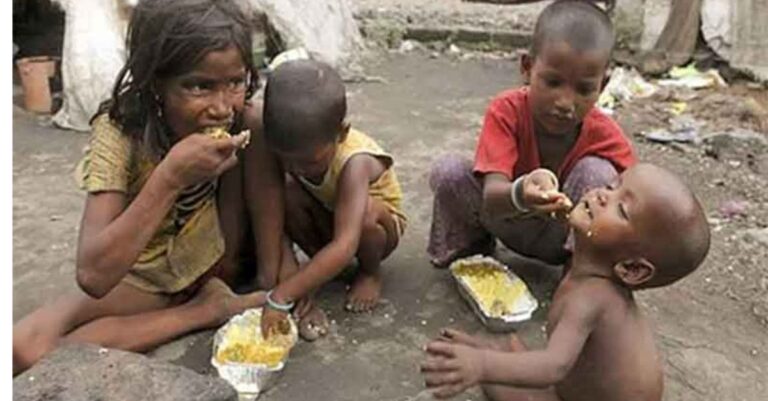By T Navin
2024 witnessed extreme heatwave conditions. As per analysis of Heat Watch, there were about 600 deaths due to heat waves. Temperatures peaked with a city like Delhi witnessing a record 52 degree temperature and Hyderabad 47.2 degrees.
Heat waves are being attributed to climate change and such conditions are only growing in the years to come. Some parts of the cities are expected to emerge as urban hot islands, which would have record land surface temperatures. A negative impact of such conditions are going to be on the livelihoods of those who need to carry out economic activities outdoors.
Two studies were undertaken on the impact of heatwaves on informal sector workers. One of these studies is titled ‘Heat Havoc: Investigating the impact on Street vendors’ by Greenpeace India and National Hawkers Federation.
The second is titled ‘Impact of Extreme Heat on Gig workers: A survey report’ carried out by Heat-watch and Telangana Gig and Platform Workers Union (TPGWU). They tried to study the impact of heatwaves on street vendors in Delhi and Gig and Platform workers in Hyderabad.
Heat Waves – Impact on Street Vendors and Recommendations
In Delhi, the surveyed street vendors included ones selling books, cosmetics, foot items, fruits, vegetables, jewellery, toys etc. While 68.92% of street vendors were aware of heat waves, only 9.56% were aware of the Delhi heat action plan.
Street vendors lacked systemic support to engage with the Government to mitigate its impact. 52.75% had not taken measures to prepare for extreme heat. 80.08% saw a reduced footfall of customers to their enterprises. While 63.88% took breaks to cope with the heat, 78.35% did not receive any guidance on dealing with heatwaves. 85.39% felt the need for setting up medically equipped heat shelters in their vicinity. 81.54% were not yet part of schemes like the Pradhan Mantri Street Vendors’ Atmanirbhar Nidhi Yojana.
Health challenges became more common. 73.44% experienced irritability, 67.46% dehydration, 66.93% headaches, 66.53% sunburn, 60.82% fatigue, and 57.37% muscle cramps.
Children from street vendor households exhibited symptoms like vomiting, diarrhea and nosebleeds. Women reported high blood pressure and delays in menstrual cycles. There were variations in oxygen saturation (SpO2) in blood and pulse rate (bpm) levels which has an effect on the cardiac function.
These extreme temperatures exacerbated existing conditions like asthma and diabetes, highlighting the severe impact of heatwaves on their health and well-being. Despite the health risks of heatwaves, street vendors are seen to be less concerned about it as the concern of livelihood security was at the top of their priority.
Economic impact was common. With heatwaves, customer footfall to street vendors reduced which directly impacted income. Street vendors had to adapt to the situation. E.g., A vegetable seller opted to sell cheaper vegetables instead of expensive ones thereby resulting in a loss of Rs. 500 to 600 per day.
Heatwave conditions only meant that vegetables would perish faster. 50.86% were experiencing increased financial strain due to heightened healthcare costs which increased by about Rs. 4,896. 50.8% saw increased expenses for cooling. 49.27% saw an overall loss of their income. 81.14% witnessed an increase in electricity bills. 63.08% spent extra money to create a vendor canopy. Under thermal discomfort, the need for buying cooling equipment increased but lacked financial assistance.
To cope with heatwaves, street vendors adopted various strategies. They sought refuge in shaded areas such as under trees. Many used wet cloths – draped dupattas over their heads for immediate relief. Improvised shelters, such as makeshift roofs of Chappar or plastic sheets, were commonly used to shield against the sun’s rays.
In the absence of modern cooling equipment, traditional methods like storing water in clay pots (‘Matki ki Pani’) was used. Dietary adjustments were also made, with lighter meals like ‘Chawal and Raita’ preferred for lunch, and ‘Sattu’ in water often consumed for breakfast. Limited clothing adaptations were made, particularly by women vendors, who often wore what was readily available, even if not ideal for the weather.
Street vendors felt the need for establishment of medically equipped heat shelters and improved infrastructure in marketplaces. They sought medical facilities (97.6%), washroom access (95.9%), and localized pure drinking water (91.5%) to better cope with extreme heat.
The report suggests the need to recognize heatwaves as a national disaster and ensure dedicated funding for adaptation, mitigation, and relief efforts. The need for integrating them into city-wide emergency response plans, providing access to essential services like drinking water and sanitation, and offering training on heatwave preparedness were emphasized to protect their health and livelihoods during extreme weather events.
A loss and damage fund is suggested to street vendors and outdoor workers for compensating the work losses and additional expenses incurred during heatwaves. It also emphasized major polluters’ pay adaptation measures.
Heat Waves – Impact on Gig and Platform workers and Recommendations
In Hyderabad, gig and platform workers in the survey included those working for Uber, Ola, Rapido, Swiggy, Zomato, Porter, Blinkit, Grofers, Big Basket, Dunzo, Instasmart, Shadowfax, Delhivery and Urban company. 88.6% were male workers. 77.71% belonged to the 25-44 years age group. 54.21% had completed secondary education.
The survey found 55.42% worked for more than 8 hours. 49% felt working in hot weather reduced their productivity. Access to basic amenities during heatwave conditions was seen as limited. Only 57.83% had access to cool and clean drinking water. Clean washrooms were available to only 31.33% of workers, while only 19.28% had access to cooling facilities like fans.
Rehydration solutions, such as ORS or lemon water, were accessible to just 15.06%, and only 15.66% had rooms for short rest breaks. Shade, essential for protection from the sun, was available to only 16.87% of workers. Access to heat-protective clothing and footwear was notably low, with only 6.63% of workers equipped. Additionally, only 6.02% had access to skin infection relief medicines, such as prickly heat powder, indicating significant gaps in essential amenities for heat protection.
Several health symptoms were experienced due to extreme heat. Heat exhaustion affected 51.81% of workers, leading to fatigue, dizziness, and nausea. Heat stroke, a severe and life-threatening condition, impacted 30.12% of workers, characterized by high fever and unconsciousness. Dehydration, marked by thirst and weakness, affected 27.11% of workers. Sunburn and other skin issues, including rashes and fungal infections, were experienced by 18.07%. Chronic kidney disease, potentially exacerbated by heat, affected 6.63%, while heat edema, causing swelling and stiffness, impacted 7.23%.
Additionally, 16.2% of workers reported stomach or gastrointestinal issues like acid reflux and indigestion, underscoring the significant health risks posed by working in extreme heat conditions. Women workers reported that working under extreme heat made menstrual cramps and related symptoms worse and increased Urinary Tract Infections (UTI). Despite the health symptoms experienced, 44.58% did not receive any medical diagnosis.
To cope with the extreme heat, gig workers employed various strategies to stay cool and hydrated. Many sought out shaded areas, such as under a tree, to rest during the hottest parts of the day. They often carried water and Oral Rehydration Solutions (ORS) from home and drank hydrating beverages like buttermilk, lemon water, and glucose to maintain their energy levels. Some chose to rest and avoid working during the peak heat hours. When necessary, they relied on free water filters provided by NGOs or purchased water to stay hydrated. To protect themselves from the sun, many wore caps, while those with access to cabs waited inside, benefiting from air conditioning to escape the heat.
On interventions required for improving working conditions under heatwave conditions, 65.06% expressed the need to be provided with water and clean toilets, emphasizing the importance of access to basic sanitation and hydration. 55.42% suggested the need to be provided with shaded rest areas to protect themselves from harsh sun.
Additionally, 45.18% of respondents believe that health insurance, specifically covering heat-related issues, would greatly enhance their security. A significant portion, 43.37%, also favoured a break in working hours between 12 pm and 3 pm, coupled with compensation, to avoid working during the most intense heat.
Moreover, 35.54% of workers suggested that doctor-on-call services would be beneficial, while 21.08% see the value in early temperature and weather alerts. Lastly, 18.67% of respondents believed in the importance of having a repository of affordable medical services in the city, highlighting a need for accessible healthcare options.
The report recommends that heatwaves be declared as a disaster to ensure dedicated responses. Municipal corporation should ensure access to clean drinking water, oral rehydration solutions, hygienic toilets, shaded rest areas, and cooling facilities within a 2-kilometre radius. These facilities need to be provided in existing public spaces, with temporary setups which are accessible via apps for gig workers.
Additionally, platforms should regulate working hours by implementing mandatory breaks between 12 pm and 3 pm during extreme heat, offering flexible hours without penalties. Mandatory heat awareness training programs, doctor-on-call services, and comprehensive health insurance covering heat-related illnesses are suggested to be provided by the state government and platform companies.
Protective work gear, such as lightweight and breathable outfits, are suggested to be supplied to workers, and early warning systems installed to notify them of impending extreme heat conditions, allowing them to plan their workday accordingly.
With Climate Change, the heatwaves and other extreme weather events are likely to increase. These are going to affect the informal economy workers who mostly work outdoors.
Along with climate change mitigation, climate change adaptation strategies need to be strengthened so that extreme weather events such as heat waves have a lesser effect on informal economy workers. The recommendations provided in the reports can help to deal with the threat to health and livelihoods of informal economy workers under heat wave conditions.
T Navin is an independent author.
Originally published in the Countercurrents




